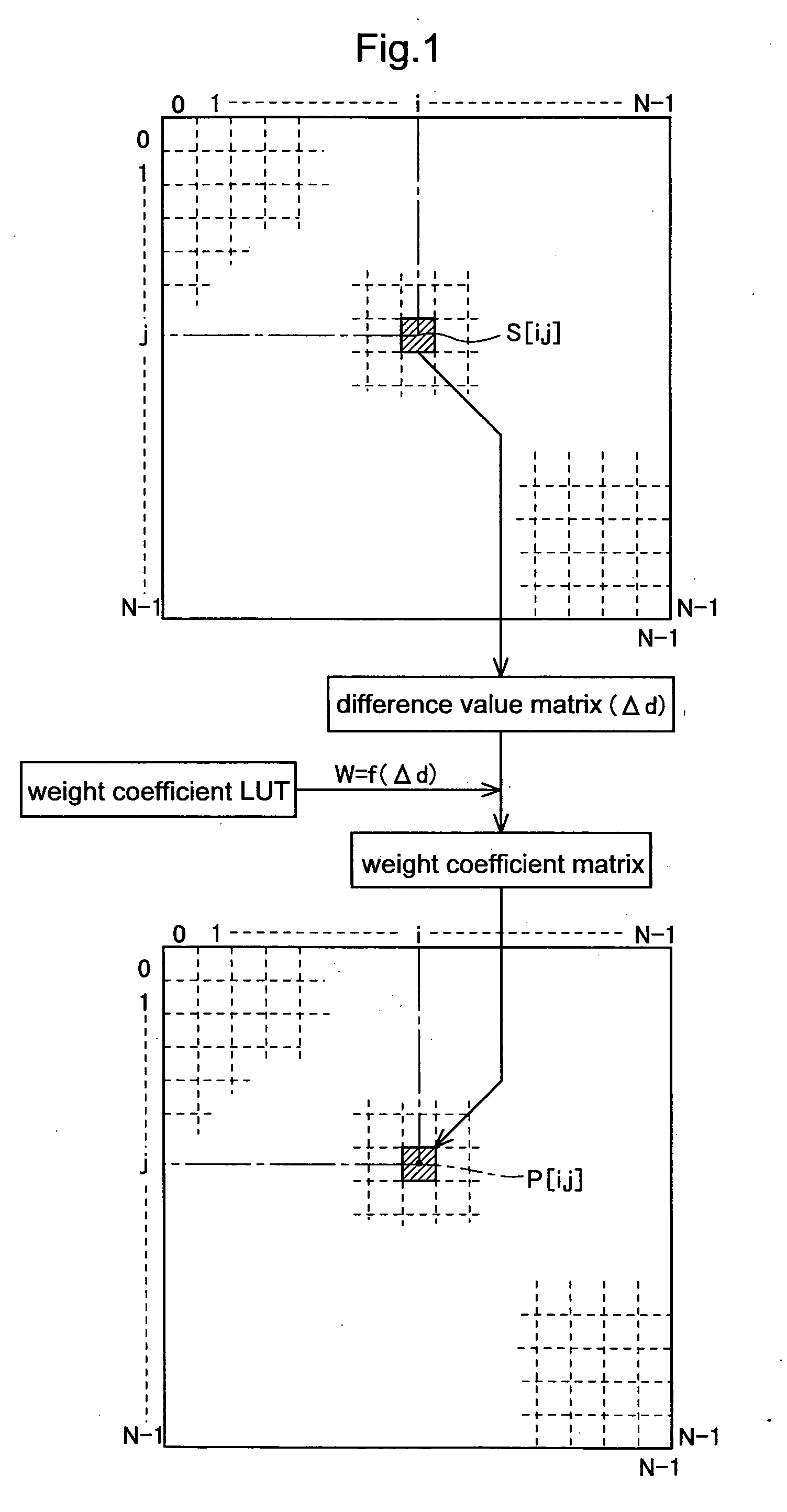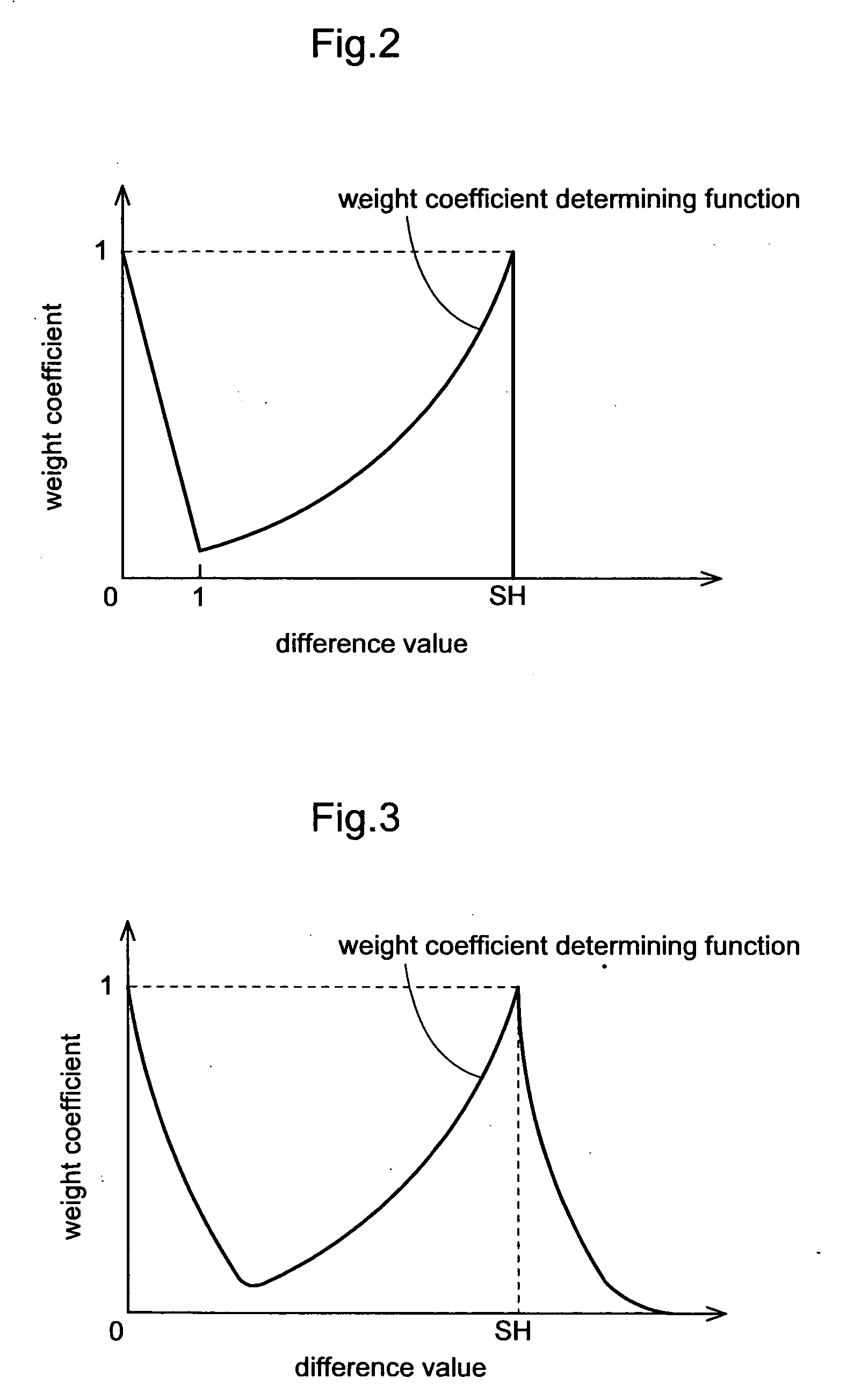Image processing method and program for restricting granular noise and module for implementing the method
a granular noise and image processing technology, applied in image analysis, image enhancement, visual presentation, etc., can solve the problems of compromising the effect of sharpness enhancement operation, unfavorable photographic image quality, and unfavorable image quality, so as to preserve fine details and texture of original photography and restrict granular noise
- Summary
- Abstract
- Description
- Claims
- Application Information
AI Technical Summary
Benefits of technology
Problems solved by technology
Method used
Image
Examples
Embodiment Construction
[0032]FIG. 1 shows a basic principle of an image processing technique of the present invention for restricting granular noise by means of a weighted average filtering operation. For simplicity of explanation, a 3×3 weighted average filter is exemplary employed for this weighted average filtering operation. With this weighted average filter, a group of “peripheral pixels” adjacent a target pixel (i.e. a pixel to be corrected) and including this target pixel per se are set as pixels for calculation (“calculation pixels”) (for the purpose of matrix calculation, it is assumed that the peripheral pixels to be processed include the target pixel per se). A result of calculation obtained by effecting a weighted average calculation using weight coefficients given for the respective calculation pixels is used as a corrected pixel value for the target pixel. As used herein, the group of calculation pixels is referred to as “a calculation area”. The technique of the present invention is charact...
PUM
 Login to View More
Login to View More Abstract
Description
Claims
Application Information
 Login to View More
Login to View More - R&D
- Intellectual Property
- Life Sciences
- Materials
- Tech Scout
- Unparalleled Data Quality
- Higher Quality Content
- 60% Fewer Hallucinations
Browse by: Latest US Patents, China's latest patents, Technical Efficacy Thesaurus, Application Domain, Technology Topic, Popular Technical Reports.
© 2025 PatSnap. All rights reserved.Legal|Privacy policy|Modern Slavery Act Transparency Statement|Sitemap|About US| Contact US: help@patsnap.com



